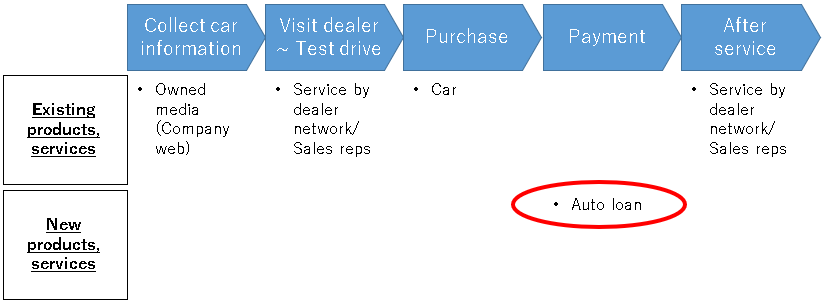Hello everyone. Last time, I wrote about “brainstorming” which is the standard for generating ideas in the “to-be (future state design)” phase.
This time, as “practice edition of brainstorming”, I would like to write about idea generation for new businesses, new products, new services, etc., which is a fairly common theme in brainstorming (although it may depend on the person). Until now, Lean Six Sigma problem solving has been a process of defining problems in the current business and processes, identifying the root cause while deep-diving, and coming up with ideas for solutions. But this idea generation for new businesses, products and services requires a slightly different ingenuity.
And this time as well, “framework”, which is essential tool for problem solvers, would be very active! The point is to combine multiple frameworks and promote thinking while creating a matrix. It’s exactly a facilitation technique.
1. Consider rough direction (of new businesses, new products, new services, etc.)
What would you do if you were asked to think about new businesses, new products, or new services? Geniuses who say “No need to think about it too much, I can get more and more inspiration!” and rich people who say “All I need is just to buy an idea!” are out of the scope here. Instead, this is aimed at people who are say “I’m in trouble even if I’m told that thing” sadly.
And, in such cases, you have no choice even if you’re in trouble, so think about the direction of idea for the time being. This matrix would help you with that.

The vertical axis is the customer axis (existing/new) and the horizontal axis is the business axis (existing/new). The bottom left is exactly the current situation, and the discussion will be about where to go from here, to up / diagonally up right / right.
Up: Utilize existing businesses, products, and services to develop new customer segments. For example, “Office Glico (*1)” has been developing middle-aged and older male office workers who have traditionally had the image of not eating sweets.
(*1) “Glico” is the global sweets manufacturer headquartered in Japan. “Office Glico” is the new business of Glico implemented in Japan.
Right: Provide new businesses, products, and services to existing customers. For example, there are car loans provided by automobile manufacturers to customers of their products.
Diagonally up right: Providing new businesses, products, and services to new customers is the most “unfamiliar field” and the most difficult direction. The example of “HondaJet” provides planes for B2B. DOCOMO (*2) Research also provides B2B research services that utilize its own mobile phone customer base as research panels.
(*2) NTT DOCOMO is the largest mobile communication provider in Japan.
As mentioned above, going “up” or “right” is relatively less difficult and safer. Aiming diagonally up right is more difficult, so this is the way to go when you need to aim for a big breakthrough. However, the examples mentioned above (HondaJet, Docomo Research) are not without any context at all, but they are making good use of their existing resources (HondaJet -> engine technology, Docomo Research -> customer base), these are important points.
2. Be more specific – focus on your target customer first
Once the rough direction is decided, consider what to do a little more specifically. For example, in the right direction of Fig1 (providing new businesses, products, and services to existing customers), you can think of customer journey of existing customers on the horizontal axis.

First, on the customer journey, map your current businesses, products and services provided by the company. On top of them, if there are some white spaces (open space), that would be the target.
Also, if you chose the upper direction of Fig1 (utilizing existing businesses, products and services to develop new customer segments), it is a new customer segment. So customer journey is fine, but let’s try another framework.

This is based on “a day in the life of middle-aged men”, but most of the time they are in their officees (People have been working from home more recently, so the situation seems to be a little different). However, Office Glico’s idea is to leave snacks/sweets in the offices during evening and overtime hours when people are likely to get hungry. Like this, let’s use our imagination and put some frameworks, not to mention existing frameworks. The timeline (time axis), such as “a day of XX” or “1 year” as mentioned here, are frameworks that can be used quite well. I think these framework stimulates your ideas.
3. Furthermore specific – add one more axis (framework)
In this kind of idea generation, we often face the sad situation of “we discussed and considered hard, but other companies were already doing it”. To avoid that, let’s add another framework and make the discussion more specific.

And as for brainstorming using this framework/matrix, as I wrote last time, let’s generate ideas and narrow them down with keeping in mind “divergence” -> “convergence”.
With these, everything should be perfect! I think you came up with some good ideas, didn’t you?
That’s all for this time, and I would like to continue from the next time onwards. Thank you for reading until the end.